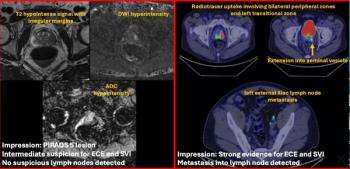FDA Grants 510(k) Clearance for New Class of Photon-Counting CT Scanners
The Naeotom Alpha class of photon-counting computed tomography (PCCT) scanners emphasize significantly reduced scan times and enhanced detection of small abnormalities.
The Food and Drug Administration (FDA) has cleared the Naeotom Alpha class of photon-counting computed tomography (PCCT) scanners, which include the Naeotom Alpha.Prime, the first single-source PCCT scanner.
Offering a scan speed of 345 mm/sec, the Naeotom Alpha.Prime may facilitate enhanced workflow efficiencies for in-patient, emergency room and ambulatory settings, according to Siemens Healthineers, the manufacturer of the Naeotom Alpha class of PCCT scanners.
The company said the dual-source PCCT scanner Naeotom Alpha.Pro features scan speed up to 491 mm/sec and 66 ms temporal resolution. In addition to being well-suited for pulmonology and pediatric assessments, Siemens Healthineers notes the Naeotom Alpha.Pro offers automated analysis and evaluation of highly calcified coronary arteries.
Rounding out the class is the Naeotom Alpha.Peak (formerly called Naeotom Alpha). The company noted the Naeotom Alpha.Peak offers a scan speed of 737 mm/sec and employs Quantum HD resolution to provide enhanced anatomical detail at a 0.2 mm slice thickness, facilitating detection of small abnormalities.
“By introducing our Naeotom Alpha class of photon-counting CT scanners, Siemens Healthineers delivers on what we see as our responsibility: to broaden the availability of this technology and enable customers to provide its clinical benefits to as many clinicians and patients as possible,” said Matthew Dedman, the head of computed tomography at Siemens Healthineers North America.
Newsletter
Stay at the forefront of radiology with the Diagnostic Imaging newsletter, delivering the latest news, clinical insights, and imaging advancements for today’s radiologists.





























